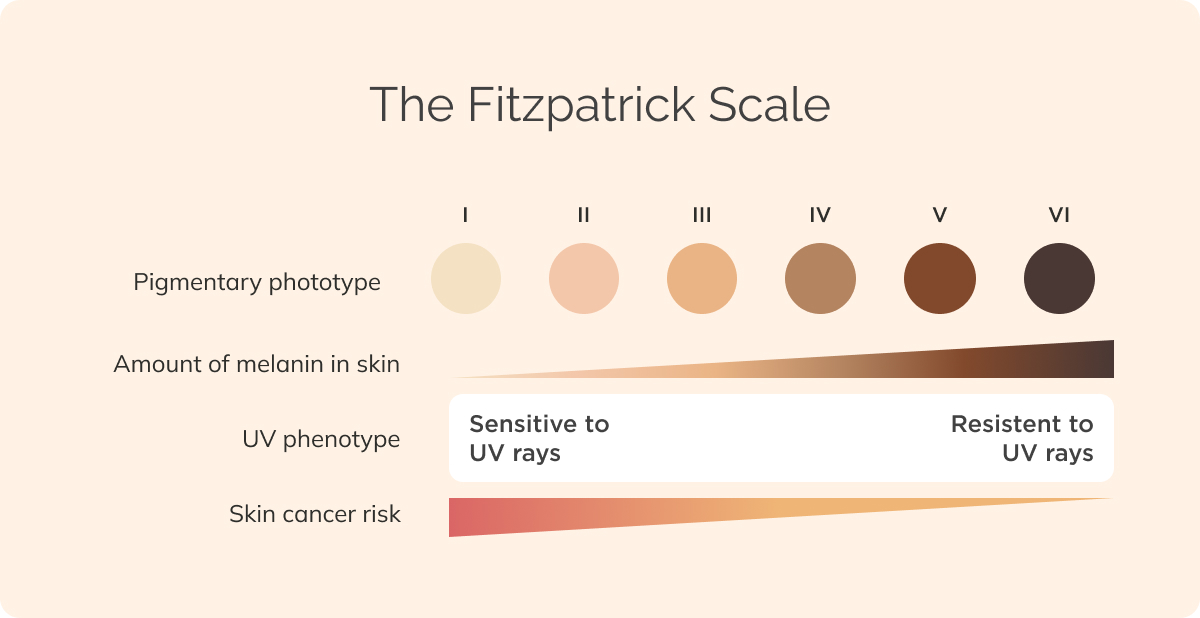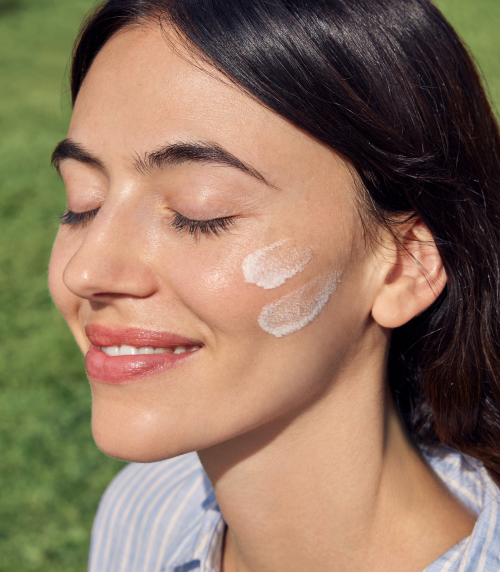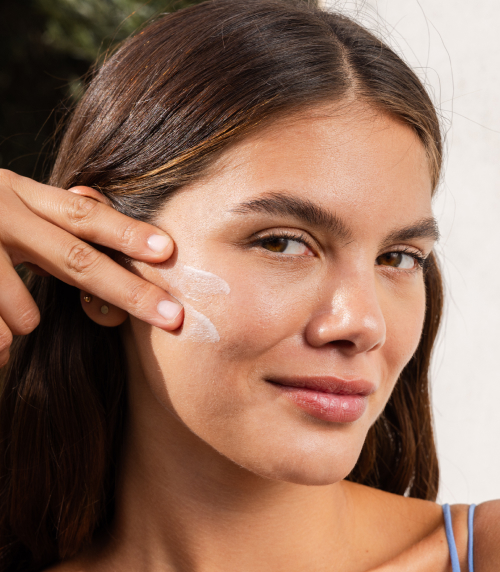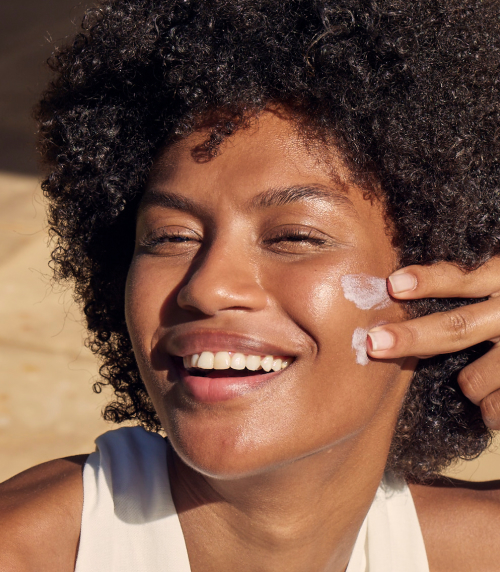Think your skin only falls into the categories of oily, dry, normal, or sensitive? You’re not alone. That’s the go-to way most of us describe our skin. But, there’s another important piece of the puzzle—one that often takes the backseat: your skin phototype.
This isn’t about breakouts, dryness, or shine. It’s all about how your skin responds to the sun. Does its tone deepen easily, or do you burn the second you’re outside? How much melanin does your skin naturally produce? These aren’t just nice-to-know facts—they can help you pick the right sunscreen, prevent dark spots and fine lines, and even lower your risk of certain skin conditions.
We sat down with Chiyoung Kang Park, ISDIN Medical Affairs Specialist, to get the full story. From what phototypes are and how to identify yours, to the best way to protect your skin—here’s everything you need to know.
So, what exactly is a skin phototype?
Phototypes classify your skin based on how it reacts to sun exposure, rather than how oily or dry it feels. As Park explains, “Instead of focusing on whether your skin is dry, oily, or sensitive, we look at how it tans, deepens, burns—or all of the above.”
It all comes down to melanin—the pigment that gives your skin, hair, and eyes their color. Melanin also acts like a natural defense against UV radiation. The more melanin you have, the easier your skin tone deepens and the less likely you are to burn. But that doesn’t mean you don’t need sun protection.
→ Your skin type (not phototype) determines how it behaves on a day-to-day basis. Have you identified yours? Check out our full guide to find out.
How are skin phototypes classified?
In 1975, renowned dermatologist Dr. Thomas B. Fitzpatrick asked a key question: Why do some people burn while others tan?
That curiosity led to what we now call the Fitzpatrick Scale. Park tells us, “It’s a simple but groundbreaking tool that changed the way dermatologists and skincare experts understand skin.”

The scale breaks skin types into six levels based on how much melanin your skin produces and how it reacts to UV exposure. It’s still used today to customize skincare, treatments, and even medical diagnoses.
→ Did you know? Thanks to the Fitzpatrick Scale, we can tailor routines, products, and sun protection to match your skin’s needs.
The six Fitzpatrick skin phototypes

“There are six skin phototypes,” says Park. “Each one is based not just on your natural skin tone, but also on how easily you burn, tan, or react to the sun in general.” Eye color and hair color can help clue you in, too.
Here’s the gist: less melanin = lighter skin = more sun sensitivity. And that usually goes hand-in-hand with lighter eyes and hair.
| Phototype | Skin Tone | Eye Color | Hair Color | Sun Reaction |
|---|---|---|---|---|
| Type I | Very fair, pale, or white | Blue, gray, or light green | Very light blonde or red | Always burns, never tans |
| Type II | Fair, pink or beige | Blue, green, or hazel | Blonde or light brown | Burns easily, tans lightly |
| Type III | Light beige or golden | Hazel or light brown | Light to medium brown | Sometimes burns, gradually tans |
| Type IV | Olive or light brown | Brown | Deep brown to black | Rarely burns, tans easily |
| Type V | Deep brown | Deep brown | Varying shades of black | Rarely burns, tans deeply |
| Type VI | Very deep brown to black | Deep brown | Varying shades of black | Doesn’t burn, deepens with ease |
How to care for your skin based on phototype
“Think of your phototype like a skincare roadmap,” says Park. “It helps guide you to products and habits that really suit your skin. And figuring it out? It’s actually pretty easy.” Just match your features and how your skin reacts to the sun with the chart above. Then, update your routine and sun care products accordingly.
Here’s where to start:
Phototypes I & II
“You likely have very fair, sensitive skin that burns quickly,” Park explains. The best approach? Avoid direct sun exposure, especially midday.
Make SPF 50+ your everyday must-have—even when it’s cloudy. Look for gentle, fragrance-free formulas with lightweight textures and soothing ingredients like vitamin E and hydrating emollients. And don’t forget to reapply!

→ Did you know: Ever felt itchy or red after your first sun exposure of the season? You might have a common type of sun allergy.
Phototype III
“You’re right in the middle,” says Park. “You can tan, but don’t let that fool you—burns can still happen.” So, stay proactive.

Reach for SPF 30 to 50, and reapply at least every two hours when you’re in the sun. Plus, give your skin some love with deep hydration.
How? Opt for skin and sun care with hyaluronic acid to support your skin barrier and restore balance.
Phototypes IV, V & VI
“Your skin may have more melanin,” says Chiyoung, “but it’s still vulnerable to sun damage and even skin cancer.”
Another thing to consider? Research shows that sunlight—especially solar blue light—can trigger pigmentation issues in medium to deep skin tones. That means it’s especially important to use the right sunscreen every day.
Opt for SPF 30 or higher with broad spectrum coverage. Also, look for sunscreens formulated with antioxidants to support healthy, radiant skin.

→ Did you know? Higher phototypes may develop fewer wrinkles, but they’re more prone to pigmentation concerns like melasma or post-inflammatory dark spots.
Your questions, answered
Can a dermatologist tell me my phototype?
Usually, no need! The Fitzpatrick Scale is self-assessed and visual, so you can likely figure it out on your own. That said, if you have unique skin conditions or want extra guidance, a dermatologist can always help personalize your care.
Can my phototype change over time?
Not really. Your phototype is genetic. While your skin can react differently to the sun or treatments, how it actually responds to UV—burning or deepening—stays pretty steady throughout life.
Does my phototype affect my skin cancer risk?
Yes, absolutely. The lighter your phototype, the more sun-sensitive your skin is, and the greater the risk of serious skin conditions. But deeper skin isn’t immune—everyone needs daily sun protection, no matter their skin tone.
That’s why protecting your skin is so important, every single day.
More than a type
As Park puts it, “Your skin isn’t just a label or a number—it’s a part of your story.” It changes with you, reflects your lifestyle, and deserves care that meets it where it is.
Understanding your skin phototype isn’t about boxing yourself in. It’s about empowering yourself to care smarter—with science, intention, and personalization. Because sun care isn’t just about how your skin looks. It’s about your health. It’s about prevention. And it’s one of the simplest ways to show your skin some love.
With the right ingredients and a daily routine that fits your lifestyle, you can give your skin exactly what it needs—calming textures, smart protection, and everyday support.


